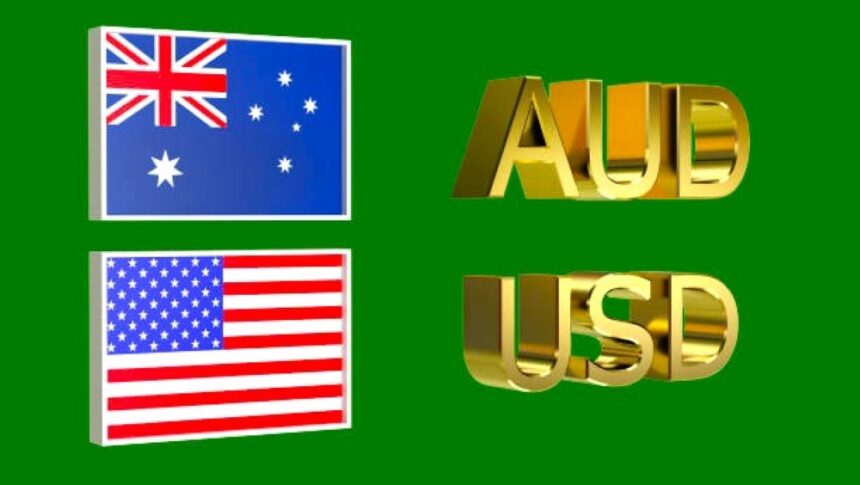The Australian Dollar (AUD) extended its recovery on Friday, reversing early session losses and advancing for a fourth consecutive day, even amid a stronger US Dollar (USD) and escalating global trade tensions. The AUD/USD pair’s resilience has surprised some traders, considering the intensifying tariff threats from the United States, including newly announced duties on Canadian imports and signals of broader global levies on key trade partners.
At the center of the Australian Dollar’s strength is a subtle shift in the Reserve Bank of Australia’s (RBA) communication. Earlier this week, the RBA decided to maintain the Official Cash Rate (OCR) at 3.85%, defying some market predictions for a cut. While that decision was expected to weigh on the Aussie amid global slowdown concerns, recent comments from Governor Michele Bullock and Deputy Governor Andrew Hauser have provided clarity and a cautious but determined stance on Australia’s inflation battle.
Bullock Flags Inflation Risks from Wage-Productivity Imbalance
RBA Governor Michele Bullock has taken a hawkish tone, noting that elevated unit labor costs and weak productivity growth may drive inflation above current expectations. These factors, in combination, complicate the RBA’s inflation outlook and could justify a longer hold on rates or even further tightening, if price pressures persist.
Bullock’s comments lend credence to the RBA’s policy pause as being conditional, not dovish. The implication is clear: while the RBA held rates steady, it remains vigilant, and inflation risks are not behind it. The market’s interpretation of her statement has leaned hawkish, helping AUD remain firm against global headwinds.
Deputy Governor Hauser echoed this sentiment, warning that the global economic outlook remains uncertain, with particular concern around the impact of tariffs on global demand and investment. He emphasized that the evolving global trade conflict could slow growth — a subtle but important nod to external downside risks without fully embracing rate cuts just yet.
Trump’s Tariff Barrage Sparks Market Turmoil
President Donald Trump delivered another jolt to global markets this week, announcing a 35% tariff on Canadian imports starting August 1. He also threatened new tariffs on the European Union and made a flurry of social media posts outlining further sector-specific measures, including:
A 50% tariff on copper
A 200% tariff on pharmaceutical imports
New levies ranging from 25% to 40% on countries including Malaysia, South Africa, Laos, Bangladesh, and Indonesia
A 10% additional tariff on any country “aligning with BRICS”
The White House clarified that tariffs set to be implemented in July will now take effect in August, giving markets a temporary reprieve but extending the policy overhang.
This aggressive tariff agenda, now targeting dozens of countries, has revived fears of a renewed global trade war, dampening investor sentiment and increasing volatility across risk assets — traditionally negative for currencies like the Australian Dollar. However, the AUD’s reaction has been notably muted, buoyed by domestic policy anchors and resilience in commodity trade flows.
US Dollar Index Climbs, But Australian Dollar Remains Resilient
Despite the strength in the US Dollar, as measured by the US Dollar Index (DXY) now trading around 97.80 the Australian Dollar has managed to hold its ground. The DXY has risen for two straight days amid hawkish Fed commentary and sustained US economic data, yet the AUDUSD pair has resisted deeper losses, reflecting underlying support from RBA policy dynamics and a firm stance on inflation.
Federal Reserve Bank of Chicago President Austan Goolsbee reinforced the Fed’s independence from political influence, stating that calls for interest rate cuts to ease government debt servicing were unfounded. Goolsbee emphasized the Fed’s dual mandate of jobs and prices, reiterating the need for data-dependent policy decisions — a message consistent with the wait-and-see stance outlined in the June 17–18 FOMC Minutes.
With the Fed in hold mode and the RBA signaling concern over inflation, interest rate differentials between the two economies may stabilize in the short term reducing downside pressure on AUDUSD.
China Inflation Data Softens, Yet Trade Activity Resilient
China, Australia’s largest trading partner, released soft inflation data for June, which may influence the Aussie Dollar in coming weeks. The Consumer Price Index (CPI) rose just 0.1% YoY, narrowly avoiding deflation, while Producer Price Index (PPI) fell by 3.6% YoY, deeper than the expected 3.2% decline.
Despite this economic softness, China’s export dynamics remain robust. Reports from the Financial Times indicate China is rerouting shipments through Southeast Asia to avoid US tariffs. While direct exports to the US declined by 43% in May, overall Chinese exports rose 4.8%, thanks to a 15% increase in shipments to Southeast Asia and a 12% uptick to the EU.
This trade realignment could help buffer demand for Australian exports, particularly commodities and raw materials, which feed into Asian manufacturing supply chains. However, any continued decline in Chinese industrial activity or price deflation could weigh on Australian exports longer term.
Australian Political Commentary Reflects RBA Frustration
Australia’s Treasurer Jim Chalmers acknowledged this week that the RBA’s decision to hold interest rates steady was not the outcome most Australians had hoped for, especially with mortgage stress mounting. However, Chalmers conceded that the central bank has sent a clear message: inflation is still a concern, and the battle to control it isn’t over.
Chalmers’ remarks reflect growing tension between political leaders eager to support household budgets and a central bank still prioritizing macroeconomic stability. The divergence between political expectations and RBA policy could remain a theme in the lead-up to August, especially with key inflation and labor data due before the RBA’s next meeting.
Rate Cut Expectations Still in Play
Despite the hawkish tone from RBA leaders, market pricing and analyst forecasts still lean toward a 25 basis point rate cut in August, as highlighted in a Reuters poll of 30 economists. Australia’s four major banks — ANZ, CBA, NAB, and Westpac — also expect a rate cut, citing the drag from global trade tensions, soft domestic spending, and ongoing inflation moderation.
This divergence between RBA commentary and market expectations will likely result in heightened AUD volatility over the coming weeks as investors digest data and central bank signals.
Conclusion: Australian Dollar Finds Footing Amid Chaos
In summary, the Australian Dollar’s recent recovery in the face of escalating US tariffs and a stronger US Dollar highlights a market environment driven by central bank expectations, global trade dynamics, and China’s economic evolution. The RBA’s hawkish hold, paired with global uncertainty, has created a delicate balancing act for the AUD.
Moving forward, key drivers will include:
RBA commentary and inflation updates
US tariff implementation and global trade retaliation
Chinese industrial and trade performance
Market sentiment around Fed policy stances
While the AUDUSD pair remains vulnerable to external shocks, the currency has found short-term resilience in the RBA’s policy signals and China’s adaptive trade behavior.
Disclaimer: This blog is for informational purposes only and does not constitute financial advice. Always conduct your own research and consult a professional advisor before making investment decisions.
[sc_fs_multi_faq headline-0=”h2″ question-0=”What should traders watch next for AUD/USD?” answer-0=”Australian CPI and employment data US inflation and GDP figures China’s economic indicators Any new US tariffs or retaliation measures” image-0=”” headline-1=”h2″ question-1=”Is a US-Australia trade conflict developing?” answer-1=”No direct conflict is evident, but broader US tariff policies may indirectly impact Australia through lower global growth or reduced trade confidence.” image-1=”” headline-2=”h2″ question-2=”What did the RBA say about interest rates?” answer-2=”The RBA held rates steady at 3.85% and warned that inflation could rise again due to wage pressures. While markets still expect a cut in August, the RBA has signaled caution.” image-2=”” count=”3″ html=”true” css_class=””]









